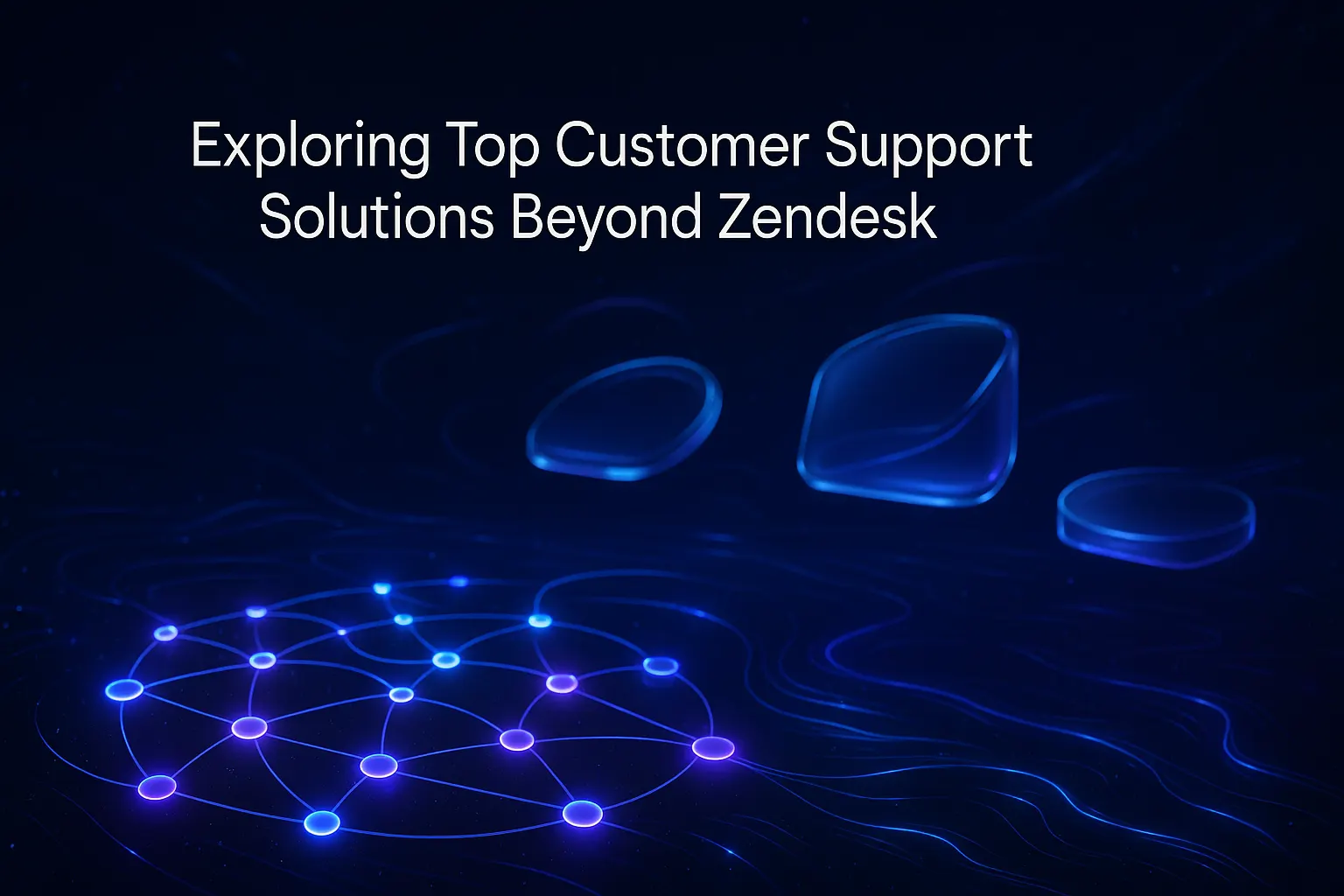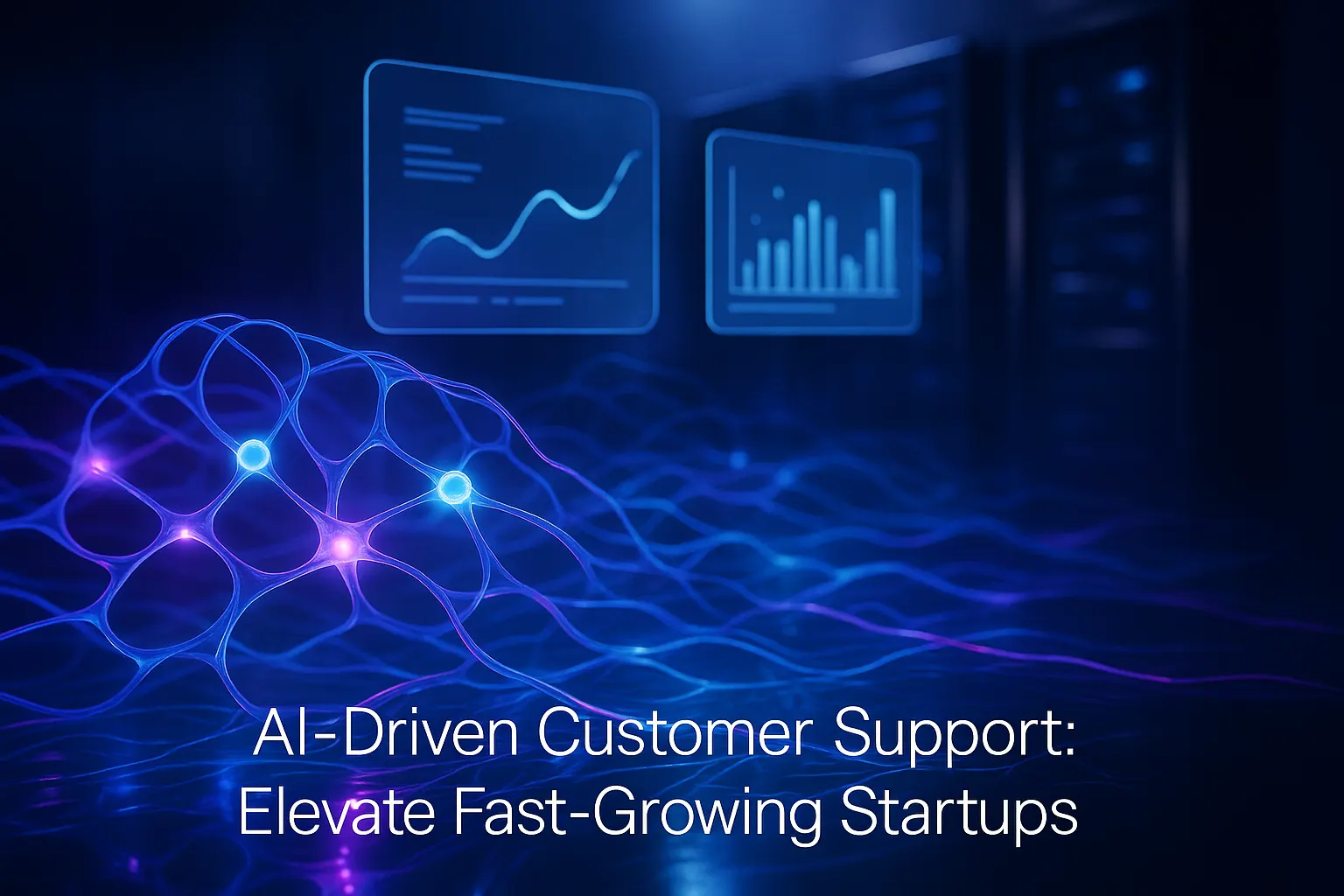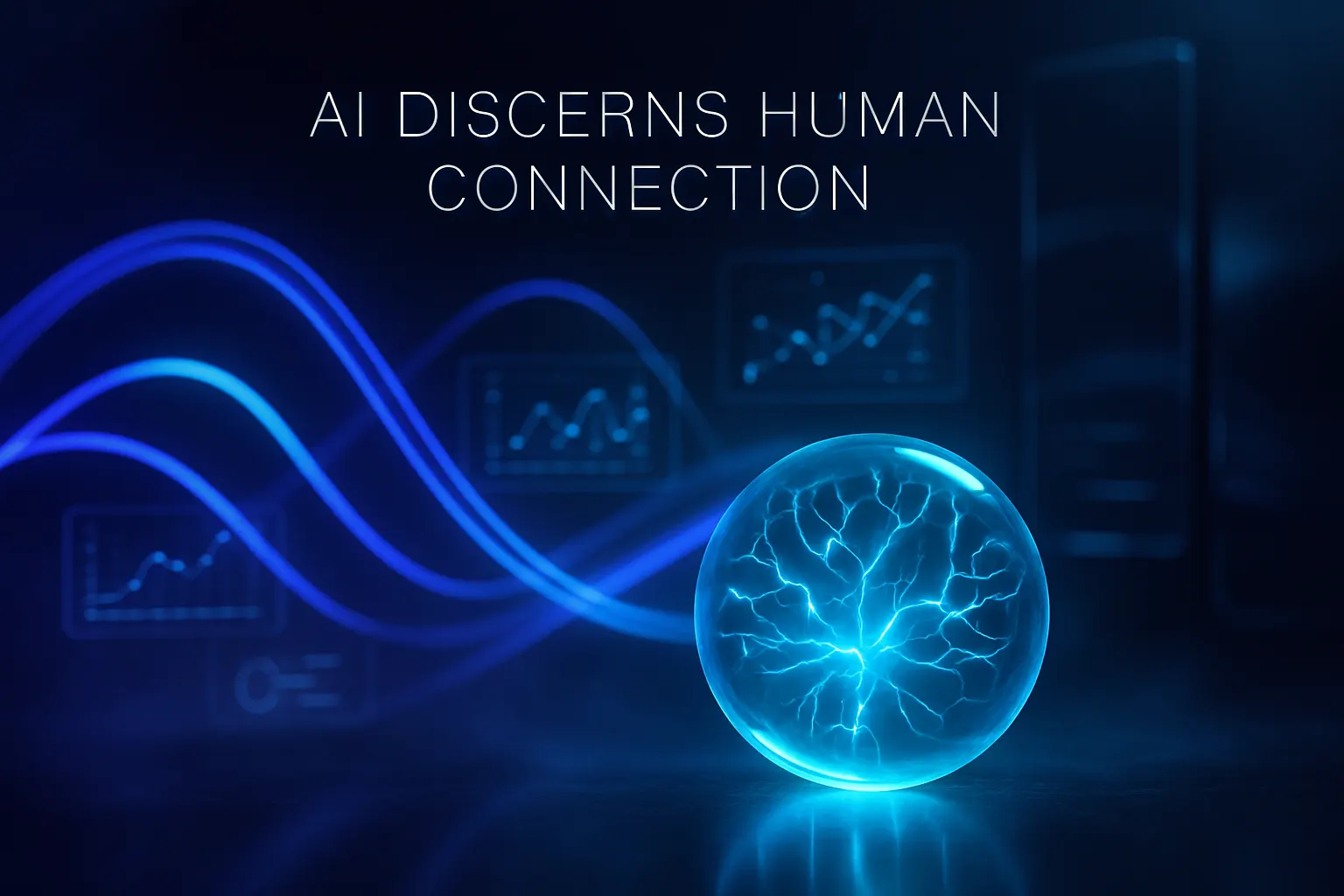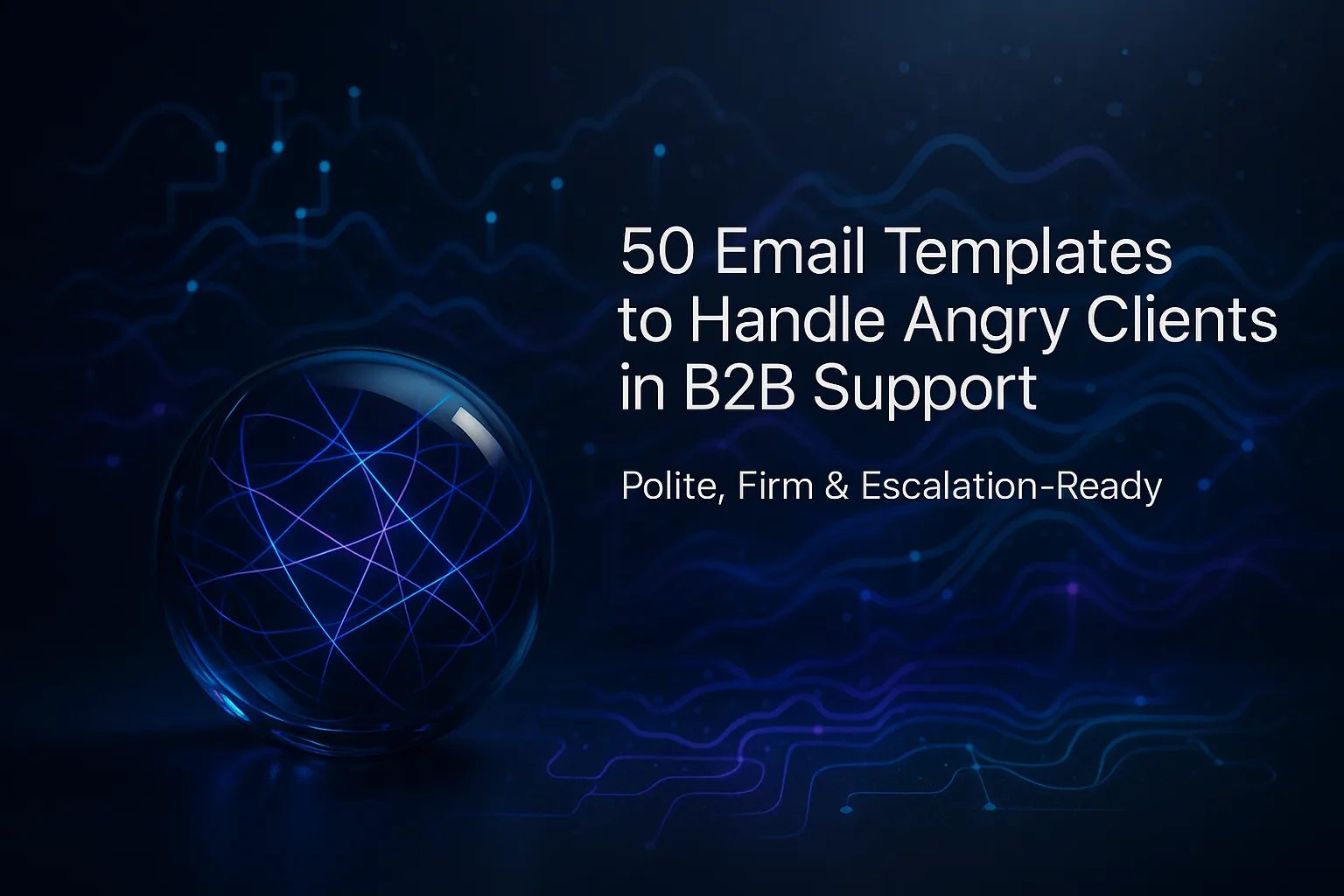Rethink Your Support Stack: Beyond Tickets and Macros
Zendesk set the standard for ticketing. Now, many teams are seeking alternatives, desiring lighter workflows, stronger AI help, and clearer data practices. They aim to avoid vendor lock-in and the slow rollouts caused by complex admin tasks. They also want to reduce the time it takes to train new agents. Your next platform should feel streamlined for agents and leaders alike, while meeting privacy needs and integrating into your tech stack without disruptive rewrites. This guide compares the most practical Zendesk alternatives currently available. Each option serves different teams, channels, and growth stages. Use the selection criteria below to help pinpoint your shortlist.
How to Choose a Zendesk Alternative
- Agent experience: Streamlined workflows, faster drafting, and a consistent communication style. Test solutions with real tickets.
- AI assistance quality: Seek platforms with context awareness, tone modulation, and traceable audit trails.
- Automation: Evaluate routing, tagging, and reply suggestions that adapt to evolving queues.
- Integrations: Ensure seamless connections to email, chat, CRM, and data warehouses, without heavy custom coding.
- Reporting: Look for intuitive dashboards showing SLAs, CSAT, and backlog status, with export options for deeper analysis.
- Data governance: Require robust role controls, retention policies, and privacy practices tailored to your region.
- Total cost: Analyze costs based on seats, channels, AI usage, and add-ons. Model actual volumes to avoid surprises.
- Time to value: Favor platforms with quick deployment, weeks, not months. Review their migration tools and onboarding guides.
Interested in understanding how leading companies apply AI within their customer support? Review these examples of enterprises leveraging AI to revolutionize their customer service for practical patterns and outcomes.
The Contenders, At a Glance
- Freshdesk: Deep ticketing functionality with approachable pricing for expanding teams.
- Intercom: Robust messenger, proactive support, and product-led engagement.
- Typewise: AI-powered writing and workflow layer that enhances your existing tools.
- Gorgias: Ecommerce-focused support with comprehensive storefront integration.
- Salesforce Service Cloud: Enterprise-grade solution natively tied to your CRM.
- Help Scout: User-friendly inbox designed for smaller and mid-sized teams.
- Front: Shared inbox that enables seamless collaboration and smart workflow rules.
Freshdesk: Familiar Ticketing with Strong Value
Freshdesk offers a comfortable transition for teams accustomed to traditional ticketing flows. It covers email, chat, and self-service options with a clear, intuitive interface. Admins benefit from granular rules and SLA timers, while marketplace apps can address additional needs without coding heavy solutions. Reporting covers essential metrics effectively. Freshdesk's pricing is reasonable for mid-market budgets. However, a challenge occurs when advanced customization and complex analytics are required. Very large teams may outgrow the dashboards, or may need broader access to and control over their data. Freshdesk suits teams seeking reliable ticketing and an easy learning curve.
Intercom: Conversational Support for Product-Led Teams
Intercom excels at in-app messaging and seamless customer onboarding. Its messenger, product tours, and proactive outreach drive engagement and support. By uniting support, marketing, and product data, teams can deliver personalized responses and real-time nudges. The interface feels fast and contemporary for agents. However, costs can escalate with extensive usage and additional features, and some ticketing functions are lighter compared to legacy platforms. Intercom is ideal for SaaS teams that embed customer support within their product experience and benefit from tight data integration.
Typewise: AI Writing and Workflow Layer for Faster Replies
Typewise directly integrates with CRMs, email platforms, and chat tools, enabling agents to draft responses quickly with context-aware AI suggestions. Its tone guardrails ensure consistent branding across channels and languages, while team-wide style rules remain enforced, even under heavy workloads. Managers can monitor reply quality and track time savings. The platform prioritizes strict data privacy and clear handling boundaries. Typewise works alongside your existing help desk or inbox, reducing migration risk and maintaining current workflows. It’s suited for support teams/CX managers who want faster, branded communication and lower handle times without restructuring their stack. For further inspiration, see how leading companies utilize AI in customer service and adapt these approaches to your team.
Gorgias: Ecommerce Support Built for Storefront Speed
Gorgias is tailored for ecommerce operations, bringing order, return, and shipment data directly into every conversation. Agents can process returns, refunds, or confirm order status without additional navigation. Macros leverage storefront-specific variables to minimize typing. Reporting tracks revenue influenced by support activities. The platform’s specialization, however, may be limiting for B2B environments or more complex support models. Gorgias is an excellent fit for Shopify and other storefronts where rapid handling of order-related queries is essential.
Salesforce Service Cloud: Enterprise CRM Depth
Service Cloud anchors customer support within the broader Salesforce ecosystem, aligning data, permissions, and workflows with your sales and customer success teams. It provides robust routing, comprehensive knowledge management, and broad channel coverage. Advanced analytics tap directly into your CRM data. Implementation can require more time, and effective use depends on admin expertise and governance. Costs match its enterprise-grade features. Service Cloud is best suited for organizations already integrated with Salesforce seeking a single source of customer truth.
Help Scout and Front: User-Friendly Inboxes Designed for Smaller Teams
Help Scout offers an inviting, straightforward inbox with documentation features and light automation. Teams appreciate its intuitive design and rapid setup. Reporting and workflows are elegantly simple, focusing on essential needs. Front specializes in inbox collaboration, featuring tagging, smart rules, and easy task assignment. The platform makes it easy to involve colleagues from outside the support team. Both solutions trade deep customization for speed and clarity, making them ideal for startups and SMBs valuing simplicity and rapid onboarding.
Key Strengths by Scenario
- You want rapid setup: Help Scout or Front.
- You run a SaaS company with in-app chat: Intercom
- You want AI-powered writing inside your current tools: Typewise.
- You sell via Shopify: Gorgias.
- You need deep CRM integration: Service Cloud.
- You prefer classic ticketing value: Freshdesk.
Migration Playbook: Switch Without Chaos
- Audit workflows: Document your top intents, macros, tags, and SLAs; eliminate unused rules.
- Migrate data: Export tickets, users, and knowledge, test imports in a sandbox environment.
- Integrate channels: Connect core channels like email, chat, telephony, and CRM; verify user identity syncing.
- Pilot AI drafting: Establish tone and style guides, then measure reply speed improvements.
- Run a parallel week: Direct a portion of traffic to the new platform; compare CSAT, average handle time, and reopen rates.
- Train agents: Conduct short trainings using real cases, gather feedback, and adjust as needed.
- Cut over: Switch traffic fully; maintain read-only access to the legacy platform for two weeks.
Great support is a system, not a single tool.Approach migration as a series of achievable milestones.
Final Take: The Right Alternative Depends on Your Needs
No platform is perfect in every scenario. Teams with heavy ticketing needs should trial Freshdesk. Product-led teams will benefit most from Intercom. Ecommerce teams should prioritize Gorgias, while enterprises with an existing Salesforce footprint should opt for Service Cloud. If you want enhanced AI writing and consistent brand voice within your current workflow, add Typewise to your evaluation. Test with your top five support scenarios, then measure time-to-first-draft and CSAT improvements. Keep your stack flexible, the impact on both your team and your customers will be tangible.
Ready to see AI-powered writing embedded in your agents’ everyday tools? Launch a brief pilot with Typewise and compare reply quality side-by-side. Reach out at typewise.app to discuss your specific needs and transition timeline.
FAQ
What are the key factors to consider when choosing a Zendesk alternative?
Focus on agent experience, AI assistance, automation, and seamless integrations. Don't overlook data governance, reporting capabilities, and the hidden costs of implementation and scaling. Strive for a balance that enhances both agent performance and customer satisfaction.
Why is avoiding vendor lock-in important for support teams?
Vendor lock-in can stifle flexibility and innovation, forcing your team to adapt to limitations rather than addressing evolving business needs. A restricted choice of tools can lead to inefficiencies and increased costs over time as your team may struggle to keep up with advancements.
How can AI improve customer support workflows?
AI can boost efficiency by offering context-sensitive suggestions and automating routine tasks, allowing agents to focus on complex issues. However, beware of over-relying on algorithms at the expense of personal touch, which can alienate customers if not tuned correctly.
Are there risks associated with rapid platform deployment?
Quick deployment can lead to insufficient training and integration issues, increasing error rates and reducing team morale. Always ensure thorough testing and clear migration strategies to prevent operational chaos during the transition phase.
What challenges might arise from using a CRM-integrated support platform?
While CRM integration can streamline data management, it may increase complexity and slow down support response if not optimized properly. Overlapping functionalities can lead to communication gaps unless data flows and roles are clearly defined and controlled.
Is there a downside to using AI-powered writing tools in customer support?
While AI writing tools enhance speed and consistency, they risk generating generic responses that lack nuance and empathy. Balancing efficiency with personalized service is crucial to avoid reducing customer conversations to mere transactions.
Why is it crucial to conduct a pilot during a support platform transition?
A pilot is essential for identifying real-world issues in a controlled environment, ensuring the new platform can handle live scenarios. Skipping this step can result in unforeseen disruptions and unfavorable impacts on customer service levels.





